Receive our newsletter
Your e-mail address is only used to send you our newsletter and information about the activities of Strasbourg Europe. You can always use the unsubscribe link included in the newsletter.
In December 2015, Strasbourg won the European Heritage Label. Created in 2007 by the European Commission, it enhances the European dimension of cultural goods, monuments, natural or urban sites and memorial sites, which are symbols of European heritage and history. The ambition of the European Heritage Label is to strengthen the sense of belonging of citizens to Europe and to a common European identity. It encourages respect, knowledge and bring citizens closer to their heritage.
A walking tour through the heart of the European district of Strasbourg (8 stops)
Approximate time: 1.5 hours – distance: 3.5 km
Departure from the Lieu d’Europe / Centre d’Information sur les Institutions Européennes
8, rue Boecklin 67000 Strasbourg
Public transport: Tram E – stop Boecklin/Lieu d’Europe
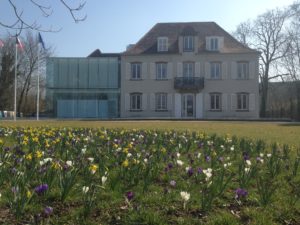
You are now at the Lieu d’Europe. One of the Louis XVI King’s counsellor, the first magistrate in Strasbourg and founder of the Neueste Nachrichten French newspaper (Dernières Nouvelles d’Alsace today) lived once in this building. In 1926, the City of Strasbourg took over the ownership of the premises and housed in there members of its administration, including the city's architect, Henri Jung.
The building is also known as Wach Villa, as Paul Wach, senator and former deputy mayor, and his family lived there until 2006.
Nowadays, the Lieu d’Europe represents an educational destination accessible to anyone, which aims to promote the European values among the citizens. Since 2014, the Lieu d’Europe is based in Strasbourg, in Kayserguet Villa. On its first floor, you will find the Centre d’Information sur les Institutions Européennes. It is part of the EU information network, Europe Direct.
Do not hesitate to get inside and visit the permanent exhibition of the Lieu d’Europe and discover plenty of information on the European institutions in our resource centre through the ample material at your disposal.
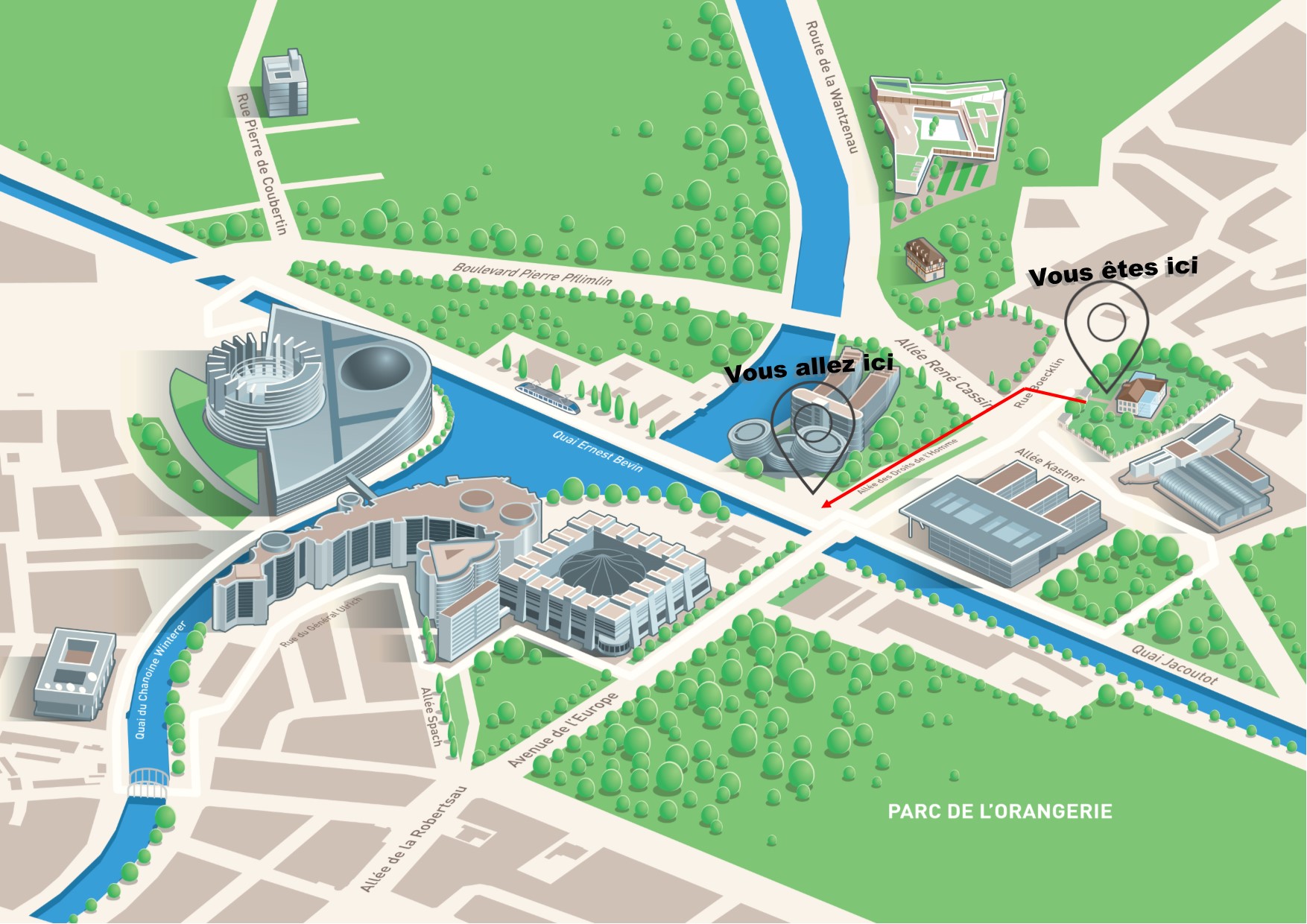
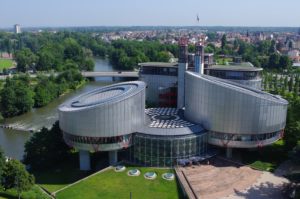
You are now in front of the Human Rights Building, where the Court is based. It is a judicial body of the Council of Europe, established in 1959 by the European Convention on Human Rights. It consists of a number of 46 judges, one for each member States of the Council of Europe, and approximatively 650 legal secretaries. Their task is to ensure that States respect the rights and guarantees set out in the Convention.
The building was designed by the British architect Lord Richard Rogers, who also designed the Georges Pompidou Centre in Paris, Millennium Dome in London and the National Assembly in Wales. Inaugurated in 1995, the Human Rights Building, often referred to as “the ship” because of its resemblance to a boat moored on the river. Seen from the front, the Human Rights Building resembles the scales of justice.
A section of the Berlin Wall, a gift from Germany, is placed in front of the Human Rights Building. The four panels symbolise the closer ties between eastern and western Europe. The word “Freiheit” (freedom) is inscribed on the wall.
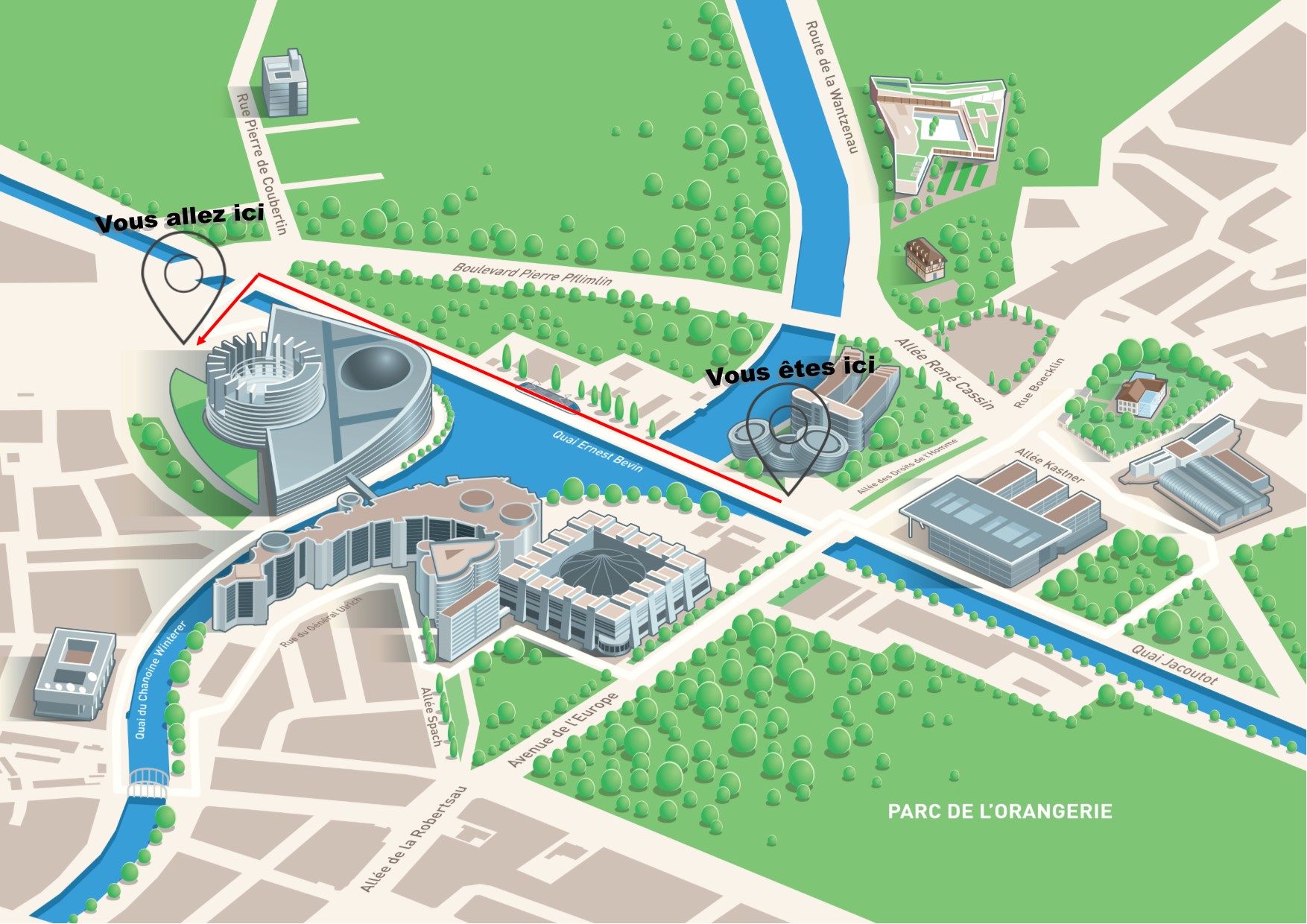
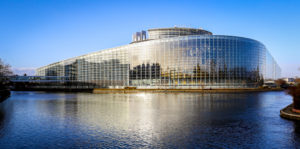
Now you are in front of the Louise Weiss building which houses the European Parliament in Strasbourg. The Parliament acts as a co-legislator, sharing with the Council the power to adopt and amend legislative proposals and to decide on the EU budget.
During the 12 plenary sittings, 705 Members elected in the 27 Member States vote and debate on European laws which affect the whole population of the European Union. MEPs, parliamentary assistants, member’s staff, journalists, visitors –around 5000 persons gathered each month in Strasbourg.
Inaugurated in 1999, this building strikes immediately by its elegance and transparency. Designed by the Architecture Studio Europe group, the construction works lasted 1188 days. With its surface of 220,000m² and its distinctive 60m tower, it is one of the biggest and most visible buildings of Strasbourg. The voluntarily unfinished aspect of the 60m high tower with 17 floors symbolises the continuous construction of the European Union.
The hemicycle has 800 seats and is currently the largest in Europe.
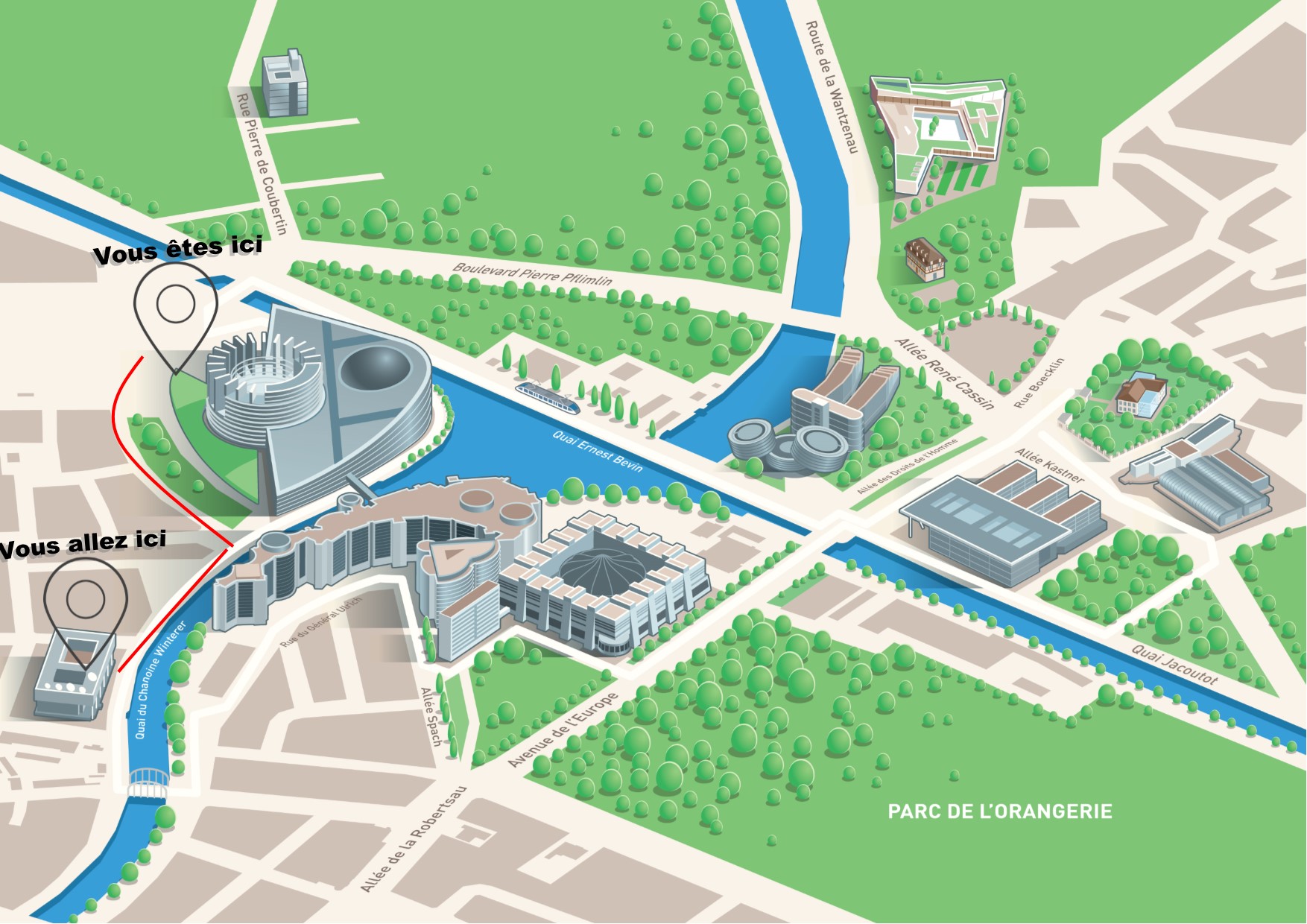
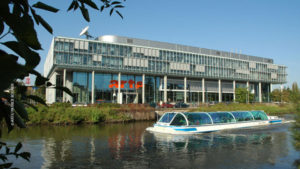
You are now in front of ARTE (Association Relative à la Télévision Européenne) headquarters. Founded in 1991 by France and Germany, ARTE is financed by the TV licence fee levied in France and Germany. 85 % of the programmes are produced in Europe. 70 % of Europeans can watch ARTE in their mother tongue –French, German, English, Spanish, Polish and Italian.
Inaugurated in October 2003, ARTE headquarters are located on the banks of the Ill river, between the city’s historic centre and the European district. The building, designed by architect Hans Struhk, displays clear, transparent lines and is harmoniously integrated into the existing environment. The construction of ARTE is a successful example of Franco-German cooperation.
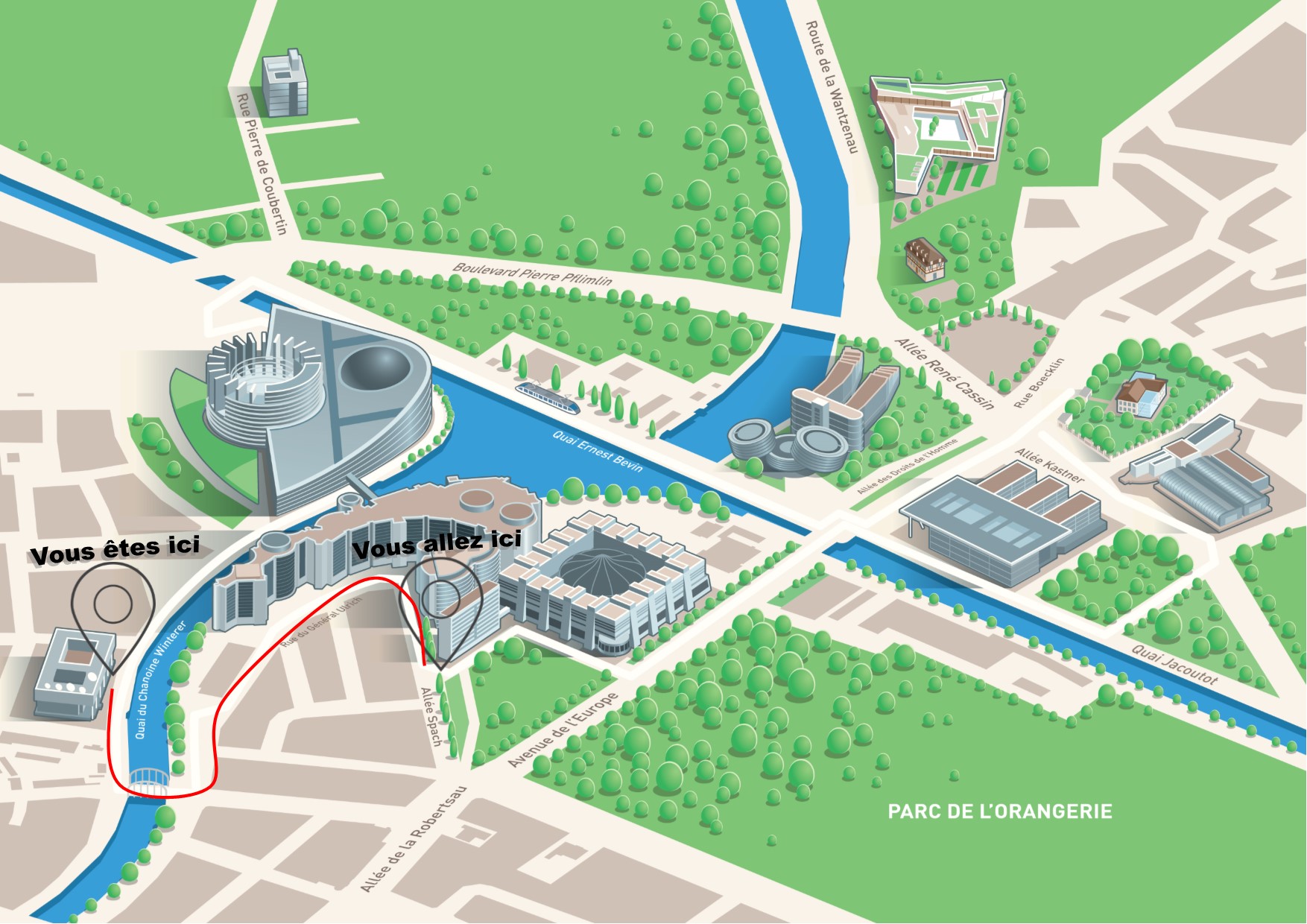
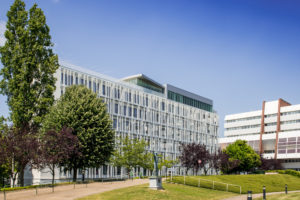
The European Ombudsman was established by the Treaty of Maastricht in 1992. Its mission is to investigate complaints about maladministration by EU institutions and bodies.
The European Ombudsman is not a judicial body and does not serve as a court. It acts as an ally of individuals, businesses and organisations who helps them to combat maladministration by the institutions, bodies and agencies of the European Union.
Since 1995, the European Ombudsman has dealt with more than 57 000 complaints opened more than 7 300 inquiries based on complaints.
The European Ombudsman's offices are located in the Václav Havel Parliament building. It was built in 1955 for the Council of Europe, which used it until 2007. The Parliament bought it in 2012 and completely renovated it.
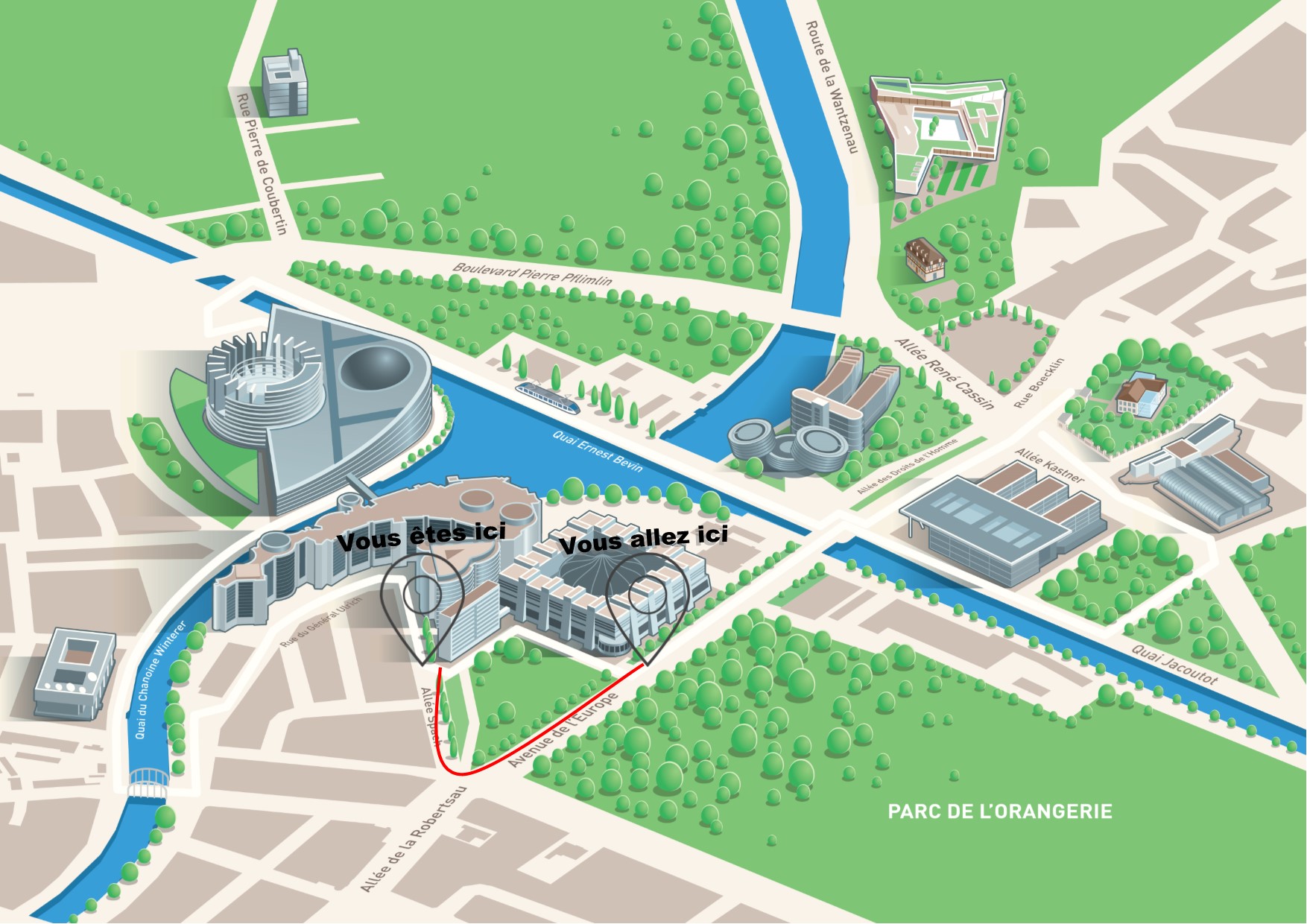
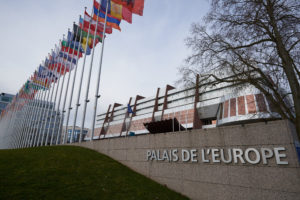
The Council of Europe is Europe's oldest intergovernmental organisation and has 46 of Member states, representing more than 700 million Europeans. The Council of Europe is a separate organisation from the 27-member EU, but collaborates with it in certain areas. It works mainly to protect and promote human rights and democratic values.
The European Convention on Human Rights is the first Council of Europe’s convention and the cornerstone of all its activities. It was adopted in 1950 and entered into force in 1953.
The building in front of you – the Palais de l’Europe – was designed by French architect Henry Bernard and inaugurated in 1977. It is the Council of Europe's principal building. The building, whose entrance is flanked by the flags of all the Council's member states, gives the impression of a solid fortress, which contrasts with the interior, which is less severe and has more fluid lines.
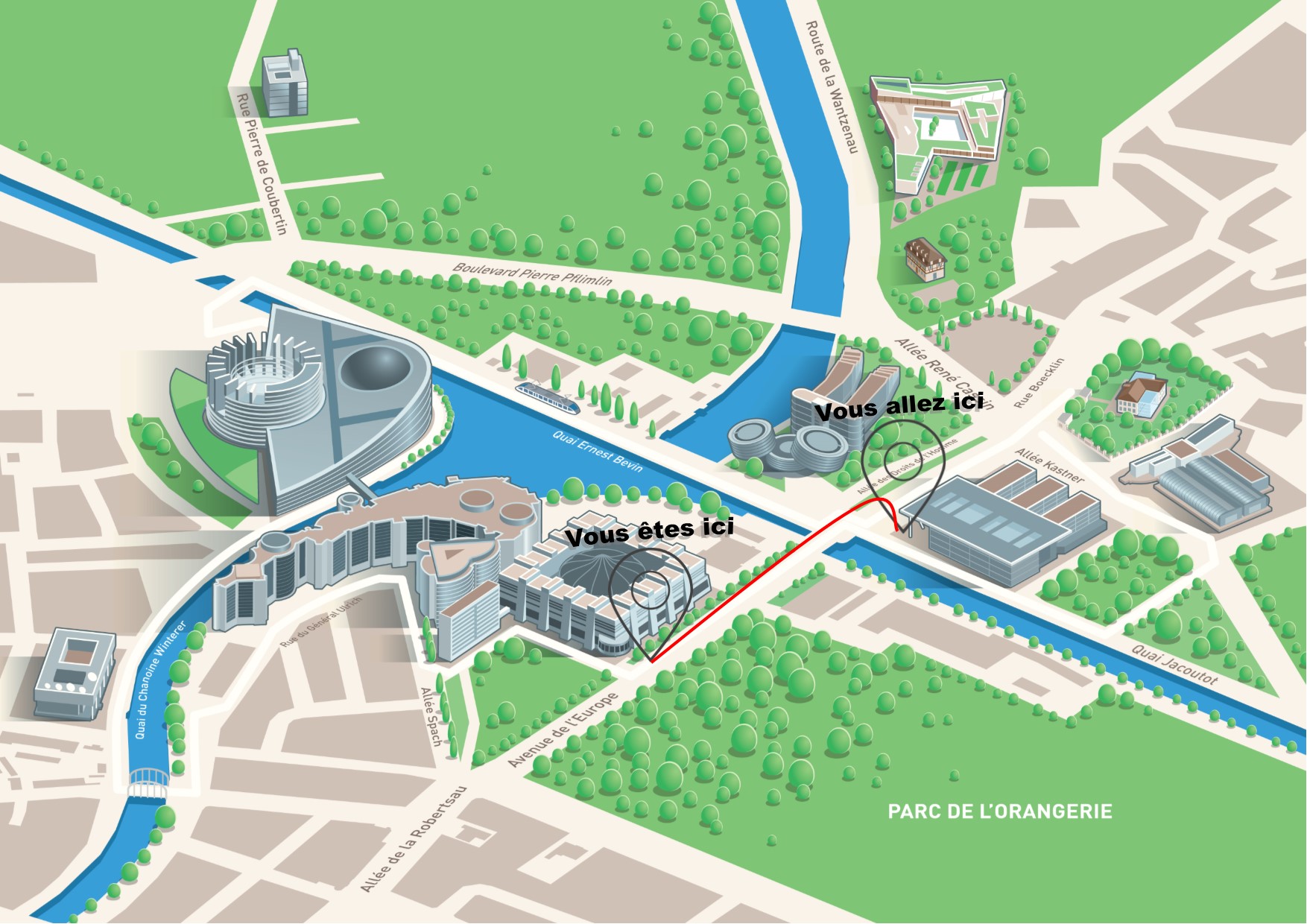
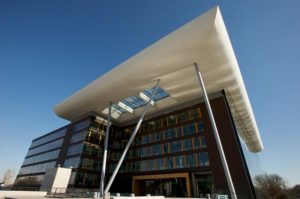
You are now in front of the Agora, the Council of Europe's newest building. It houses more than 600 staff members working for the three Directorates within the Council of Europe. It was inaugurated in April 2008 and designed by the architectural firms Art & Build (Brussels) and Denu et Paradon (Strasbourg). Voted the best office building of the year in 2008 (MIPIM award), the Agora combines modernity, efficiency and respect for the environment.
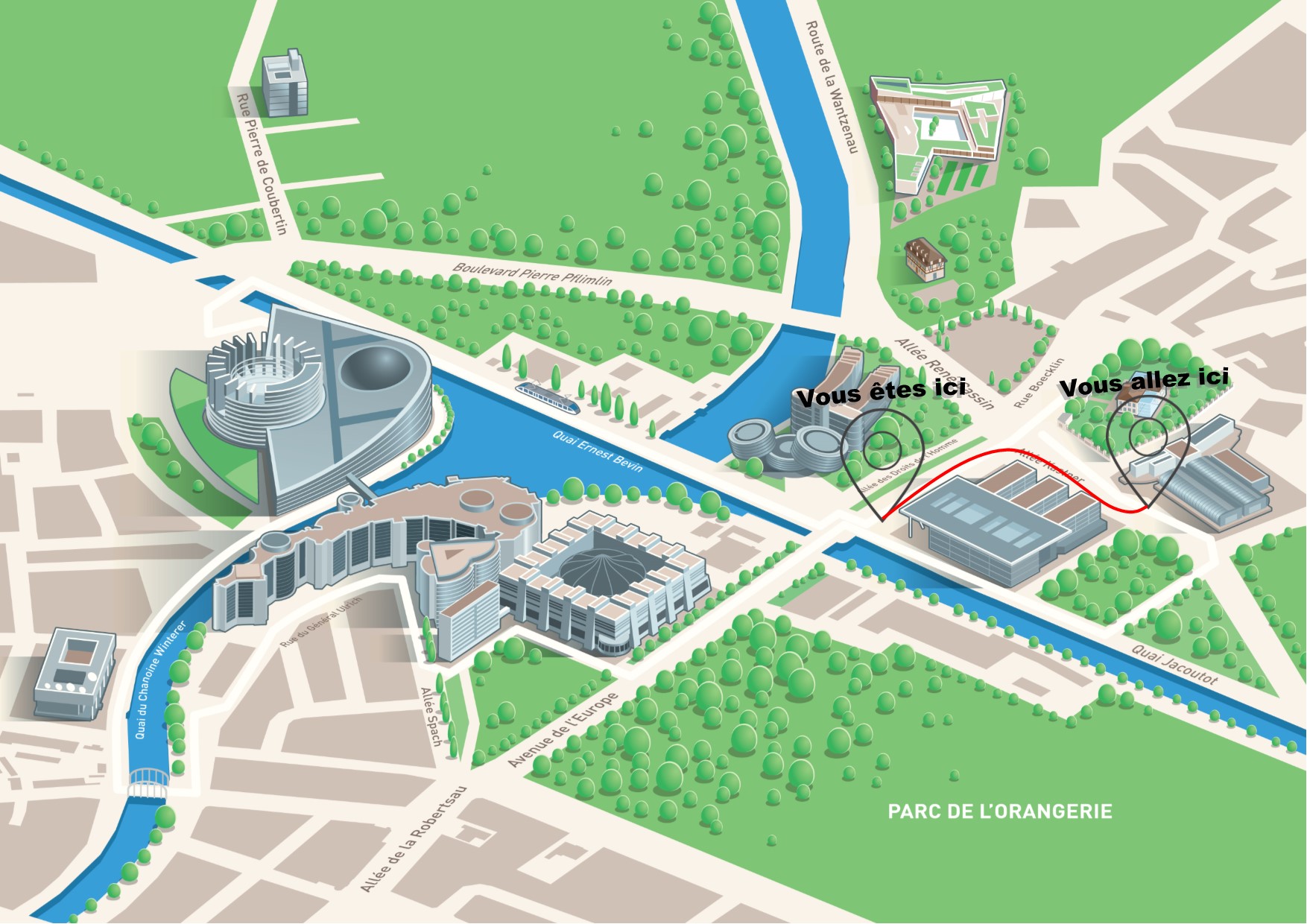
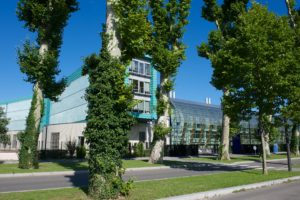
The European Directorate for the Quality of Medicines & HealthCare (EDQM) is a Directorate of the Council of Europe. The guidance and standards developed by the EDQM in the areas of blood transfusion, organ, cell and tissue transplantation and consumer health issues have a positive impact on public health in Europe and beyond.
Designed by architects from the Brussels-based firm Art & Build and the Strasbourg-based Denu and Paradon, it was inaugurated in March 2007. The curved glass and wooden structure combines a modern aesthetic with contemporary functionality and houses laboratories, offices and meeting rooms that serve the organisation's expanding role in monitoring the quality of medicines in Europe and further afield.
Your e-mail address is only used to send you our newsletter and information about the activities of Strasbourg Europe. You can always use the unsubscribe link included in the newsletter.
Information Center
on the European Institutions (CIIE)
Europe Direct Information Center
All rights reserved to the CIIE
Non-profit organization
Mailing address
1 allée Kastner
67000 Strasbourg
France
Visitors entrance
8 rue Boecklin
67000 Strasbourg
France
To provide the best experiences, we use technologies such as cookies to store and/or access device information. Consenting to these technologies will allow us to process data such as browsing behavior or unique IDs on this site. Failure to consent or withdrawing consent may adversely affect certain features and functions.
Europe Direct network
The CIIE team
Contact information and opening hours
Lieu d’Europe
The CIIE offices
Internships at the CIIE
Contact us
CIIE’s Documentation Centre & Publications
School presentations & Activities
Borrowing educational kits
Activities for the general public
Eurorépertoire
CIIE’s annual reports
Institutions of the European Union in Strasbourg
Institutions Under the Authority of the Council of Europe
Other European Organisations in Strasbourg
Sessions of the European institutions in Strasbourg
Visiting the institutions
Map of the European district of Strasbourg
Institutions in Strasbourg in photos
Discover artistic Europe
National holidays of the member states of the Council of Europe